How to Keep Your Old Home From Becoming a Money Pit
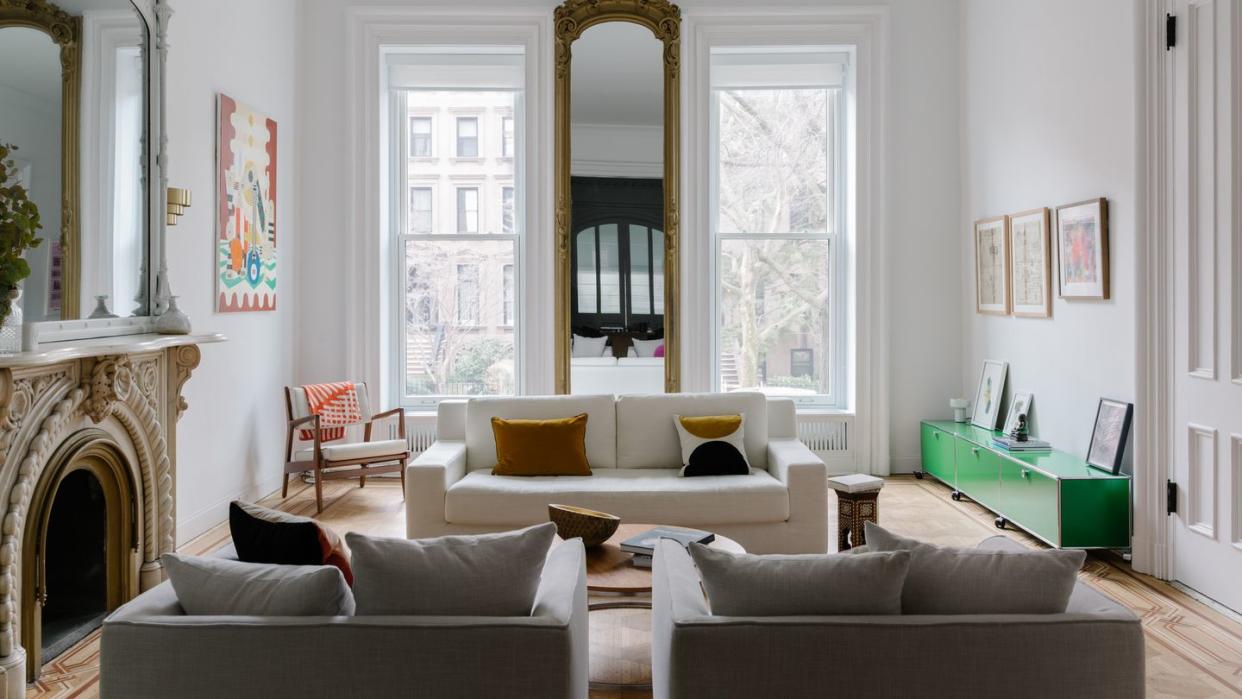
There's an expectation that all historic homes will have an imitable charm and glamorous essence to them—and don't get us wrong, many of them do. But in reality, the same charm that comes in the form of plaster medallions, detailed crown molding, and beautiful built-ins also comes with uneven floorboards, squeaky staircases, and dated appliances. (And those are just the issues you can see and hear.) Renovating older properties and restoring them to their former glory isn't an easy or inexpensive feat, which is why a fair number of people tear out or paint over the vintage features.
"We've talked to contractors in the past…and shown them a house that had a lot of historic stuff that needed to be restored, and their answer would be, 'It's much cheaper and easier if we just get rid of it and just rebuild it more modern and newer,'" interior designer Barry Bordelon tells House Beautiful. "And it is—it's easier and cheaper to do that, and that's why developers do it. [Restoring historic homes] takes time and patience, and it's a little more expensive."
Bordelon and Jordan Slocum—life partners and the duo behind the Brooklyn-based design firm Brownstone Boys—certainly aren't strangers to the typical "turnkey" properties designed with a focus on resale value that you see on house-flipping TV shows and on Zillow. But they and other contractors and architects believe you can increase a historic home's value and functionality while preserving its original features—and using your budget wisely.
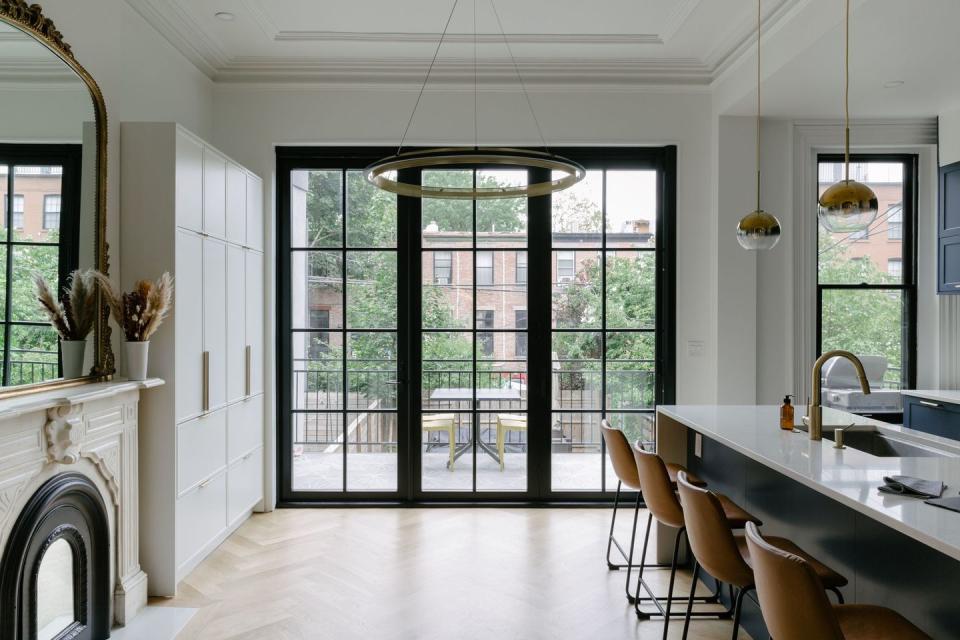
How to Add Value to a Historic Home
You may be thinking that you can live with a 1960s formica kitchen if you put a new shower in the primary bathroom. But experts say it's important to think about the house—and your budget—as a whole before you zero in on a particular project.
Make a Plan
If you know you want to eventually open up the kitchen, that can affect all your other projects—even if you're starting on another room first. Having a master plan helps you line the work up in a logical order. "The best projects [are] the things that'll pay dividends and set you up well for other projects," says James Hartford, architect at River Architects in Hudson Valley, New York. "Know where you're going, and use that as a roadmap. It's really important to make sure all your decisions are working toward the culmination of the plan."
Hartford generally recommends completing projects in a specific order. "Kitchens and bathrooms, you really got to address those, or people are going to be miserable quickly. So if you can, getting those done early is great, and then kind of work from there," he suggests. Bordelon and Slocum add that these rooms are where the modern touches are more encouraged. "It's always fun to look at spaces and the juxtaposition between the old and the new, and for me it's always the bathrooms and the kitchens," says Slocum. "We always approach a kitchen for functionality, and that usually involves modern appliances."
—Jordan Slocum
After the kitchen and bathrooms, Hartford suggests creating a "really good TV room or a family room where you can all gather." And after that? "You can keep on cutting into your priorities after that, knocking through the list."
Once the behind-the-scenes projects are complete, you can get into the cosmetic ones. The techniques you use to add value to a historic home are generally the same as those you'd reach for in a modern one—from paint colors to kitchen appliances to balancing functionality and beauty.
Decide What to Keep
Before any demolition begins, you need to remove the historic features you want to preserve. Dan Sullivan, a contractor and owner of Davaro Contracting, has worked on restoring old homes for seven years and frequently works with Bordelon and Slocum. Before doing any real work, he suggests "removing those moldings, trims, and everything that comes with the house that you want to hang onto in a methodical way so that way they don't break, then putting them in a safe place and organizing them so you can work with them later." You don't want to destroy the main reasons why you bought your historical house in the first place!
…And What to Ditch
In a restoration, not every vintage aspect has to be preserved—and honestly, it probably shouldn't be. An early-1900s stove may look beautiful, but "no one expects a kitchen to be a period piece in an old house," says Bordelon. Besides, many older appliances and materials have turned out to be hazardous, like lead-based paint and leaded glass. Hartford cautions that "if a house is older than 1970, it's going to have lead paint in it most likely," especially if it still has the original windows. "You have to be really careful about them because the sliding nature, it creates dust and can be a really big health hazard," he adds. Though replacing original windows is "a little bit heretical in the preservation community," Hartford says, if you can't restore them, it's smart to replace them early on.
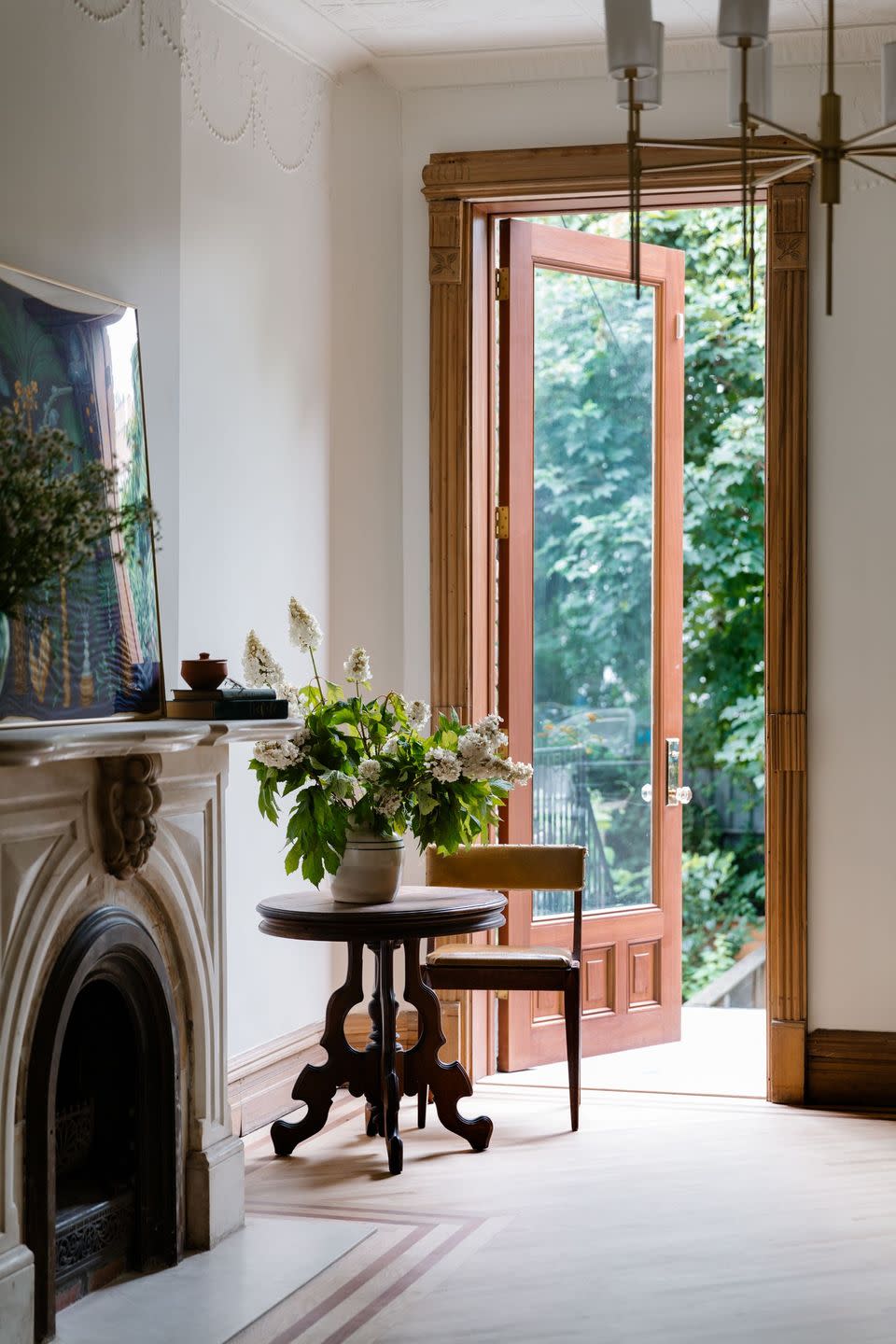
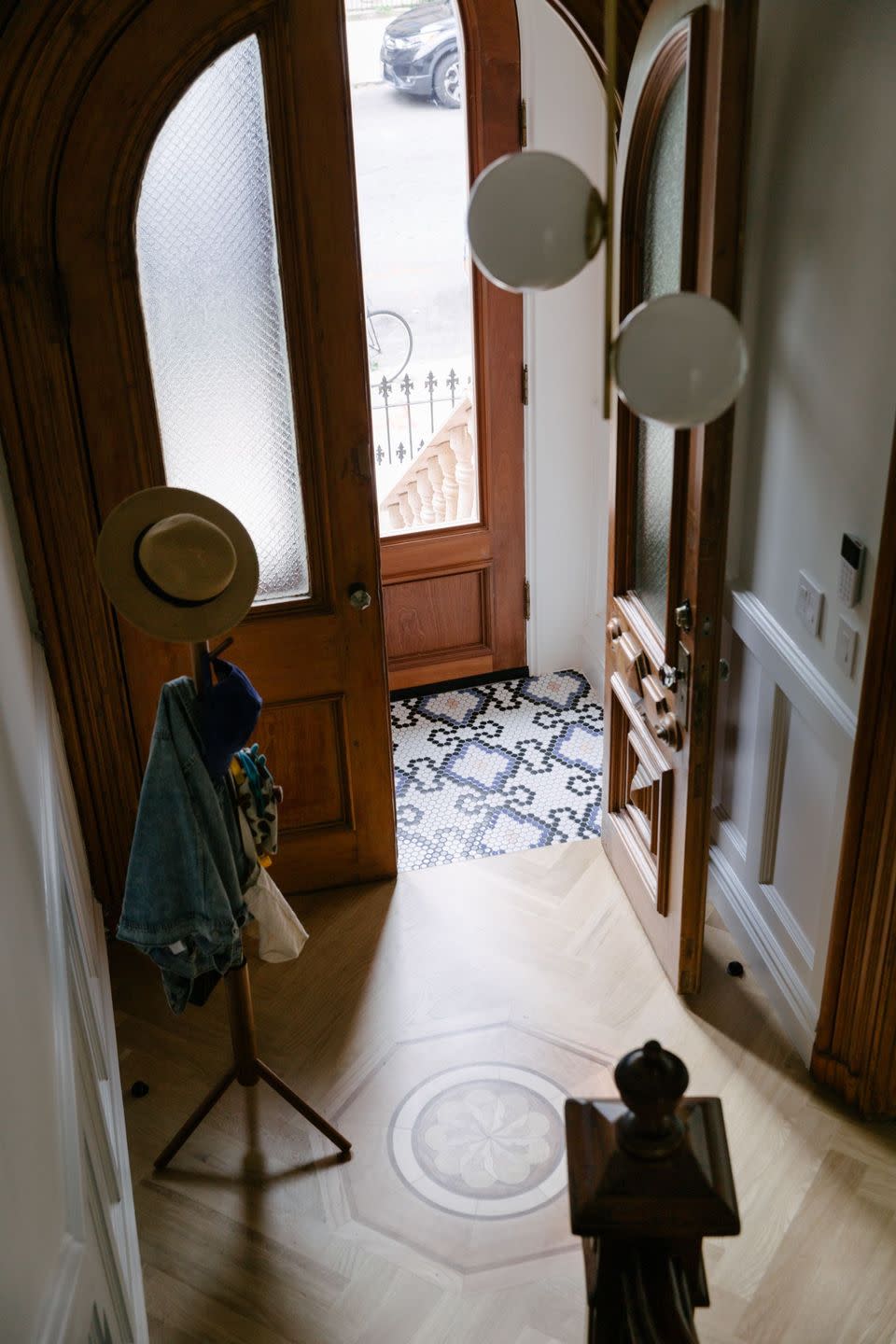
Modernize the Systems
Windows are just one of the features that need to be structurally sound before you move on to the fun stuff. Your house needs the basic necessities for comfortable everyday living: heating and air-conditioning, modern electrical, and clean water. Hartford says tackling "structure and water management" first is key because water damage can put the whole structure at risk.
How to Save Money When Renovating a Historic Home
As if it weren't obvious by now, restoring a historic home takes a lot of time, money, and dedication—and not every homeowner is up for that. However, there are some ways you can ease the financial burden, even by just a little.
Group Big Projects
The best way to save money is to group work. "I always suggest that people just move into the house and save up to get themselves to a point they could do that larger renovation in one shot," Sullivan says. He's against the idea of going room by room or chipping away at the smaller projects you can't DIY because it'll cost more in the long run. Hartford echoes this idea, also pointing out that scheduling a crew to go room by room as the homeowner can afford it will be difficult and may give you inconsistent results. "I think if you're capable of renovating something on your own, then that's when the room-by-room thing would work because you can manage it and live in the space," Sullivan says. "But when it comes to hiring a construction crew, I don't see any advantage to chipping away slowly."
Even when you have a master plan, the spaces in a home flow together and affect each other—one wall is shared by two rooms, after all. "During construction, there's decisions that are made on the fly because as much as [a room] looked a certain way when all the walls were up, now you've run into something else that now affects the next space, and you don't know it unless you're working on both of those spaces at the same time," Sullivan explains.
If you simply can't save to renovate your whole home at one time, grouping floor by floor can still help minimize costs. "If you're doing it floor by floor, I think it's really all about setting up protection and being able to minimize dust and just setting up a barrier between the current living space and the construction. And when you're doing it floor by floor, that's easy to do," Sullivan says.
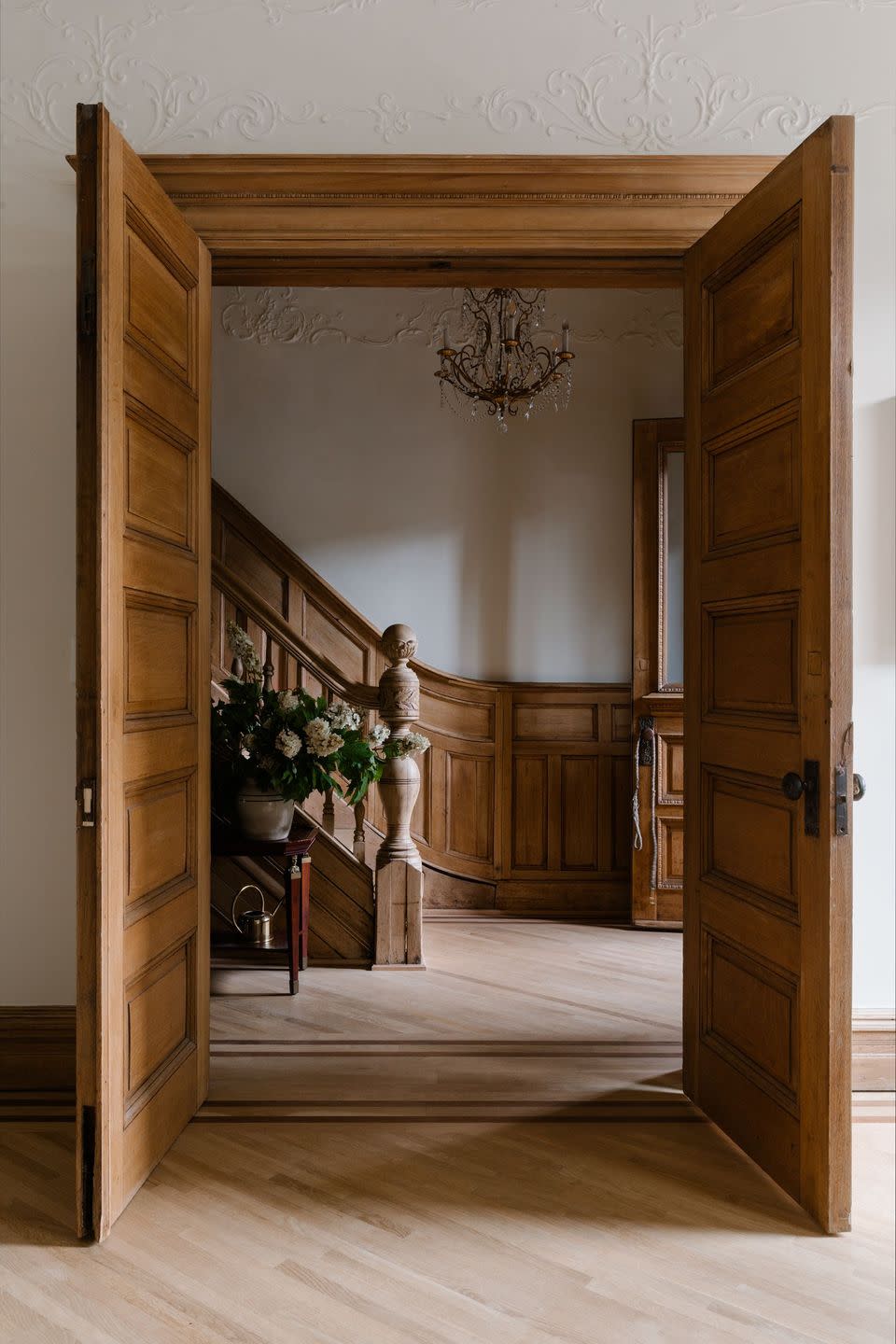
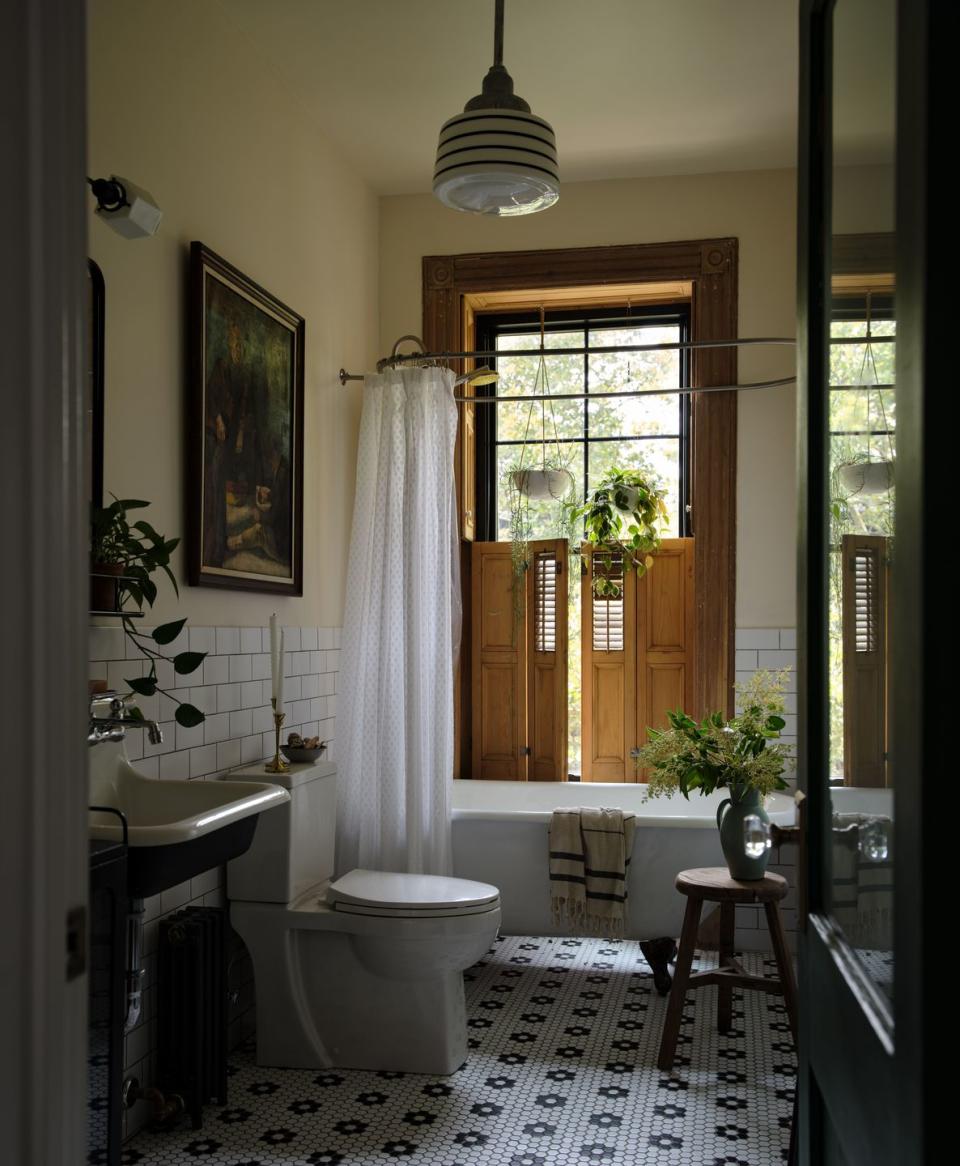
DIY What You Can
As long as the house is livable, you can learn to do some of the upgrades yourself. For example, if you love the look of plaster walls, Hartford suggests learning how to do it yourself rather than hiring an artisan to come in. Or if the contractors finished the living room before your new light fixtures came in, figure out how to install them yourself rather than hiring an electrician. (Just be careful!) The little things do add up.
Know When to Stop
No house can be everything. You may not be able to keep the original fireplace you love and have an eat-in kitchen without spending a fortune or completely changing its character. Some quirks may not be worth the cost or headache to fix. "With older homes and historic preservation, there's a line of where you start and where you stop," says Slocum. "How much can you live with the squeaky stairs, the original staircase that was built in the late 18oos? Us taking out the entire staircase, that is obviously going to significantly jump the budget."
As Hartford puts it, "You could buy a mansion for $40,000, but it doesn't mean you can live in a mansion for $40,000. There's still all the work to do."
Knowing how much you can actually take on as a homeowner is important to evaluate before you buy an old house. "People have to be careful about biting off more than they can chew and be a little careful not to get swept up in the romantic notion of it," Hartford adds.
—Jordan Slocum
It's important to know when to call it with these projects. For Sullivan, it's when he sees the clients falling down "a little bit of a rabbit hole on something." He adds, "I'll tell [clients] right away, 'Look, we could keep moving forward on this, but I'm afraid you are investing more money on experimentation that may not work out, and at this point, it's better to just start from scratch on this particular thing.'" This is where having a plan to follow from the beginning helps. Picking and choosing what you can renovate is all part of the process.
"I think people sometimes worry about overbuilding it, overdoing it, spending too much money in a house and wondering if they can get that back in resale—and they have these questions even when they have no plans in selling the house," says Bordelon. If resale value does weigh heavily on the mind, he and Slocum have found ways for homeowners to add in their ideal spaces without completely sacrificing future value. "Let's say [the clients] want a yoga room or an office or a den or something, then we'll talk about making sure that it could double as a bedroom," he says. "So it still has a closet, it still has a door, and that way if someone else that comes in the house that may not want a yoga room, but they need more bedrooms, there's that bedroom."
Other Ways to Add Value to Your Home
Upgrade the landscaping (and plant these trees)
Plan a smart kitchen renovation
Modernize the primary bathroom
Add a mudroom and a powder room if there isn't one already
Put a modern laundry room on the second floor or in the basement
Repaint it (using value-boosting paint colors)
Consider small renovations that give you more usable space
Update the closet storage systems
You Might Also Like


